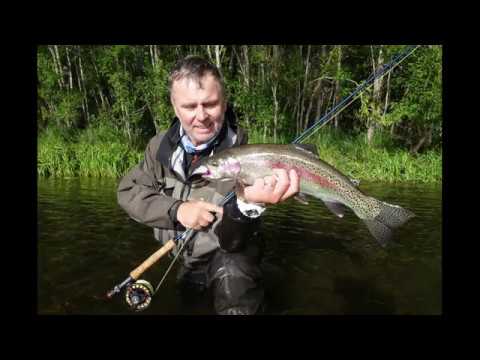Contents
Fishing for mushroom
There are some differences in the classification of this fish. The name – mykizha, is most often used in relation to the Kamchatka form. In other regions, the fish is called rainbow trout. The fish can reach a length of 90 cm and a weight of up to 12 kg. The fish is considered anadromous, but also forms sedentary forms. Freshwater forms live in both rivers and lakes. Sometimes immature individuals can go to the coastal pre-estuary zone for feeding, and return to the river in winter. After wintering, they again go to sea. There are about 6 subspecies, only one lives on the territory of Russia.
Ways to catch mykizhi
The methods of catching mykizha include spinning, float and bottom gear, as well as fly fishing. This is a fairly rare species of fish in our fauna, so fishing for mykizha can be a great moment in the life of any fisherman.
Catching mykizhi on spinning
It is quite possible to find “specialized” rods and lures for catching mykizhi. The basic principles for choosing gear are the same as for other trout. On medium-sized tributaries, light one-handed spinning rods are used. The choice of the “building” of the rod is influenced by the fact that the lure often takes place in the main stream of the river or the fish can be played in a fast current. When choosing a reel, special attention should be paid to the friction device, due to difficult fishing conditions (overgrown banks, creases, meandering river flow), forced hauling is possible. When catching mykizhi with spinning tackle, on artificial baits, anglers use spinners, spinnerbaits, oscillating lures, silicone lures, wobblers. An important point is the presence of baits that hold well in the desired layer of water. For this, “turntables” with a small petal and a heavy core or medium-sized wobblers with a narrow, pursuing body and a small “minnow” type blade are suitable. It is possible to use sinking wobblers or suspenders.
Catching mykizhi on a float rod
For fishing mykizhi on float rigs, it is preferable to have a light “fast action” rod. For “running” rigs, large-capacity inertial coils are convenient. Baits, traditional – worm or insects.
Fly fishing for mykizhi
When fly fishing for mykizhi, the traditional advice is to use grade 5-6 gear for one-handers. We must not forget that many of the modern fly fishing rigs are designed specifically for this fish. At present, it can be considered that the choice of tackle rather depends on the desires of the fisherman than on fishing conditions. When catching mykizhi in Kamchatka, it is possible to catch trophy specimens, so it is better to use gear of at least grade 6. If the water allows, switch rods can be a good alternative to single-handed rods. Various dry, wet flies, nymphs and medium-sized streamers are used as bait. The chances of successful fishing largely depend on the condition of the reservoir and on the right place.
Baits
In addition to the above lures, it is worth mentioning also floating, furrowing. Mikizha, like Siberian salmon, responds well to “Mouse” type baits. These lures are available in both spinning and fly fishing options. For fishing on them, it is worth considering the moment that the size of the bait must correspond to the expected trophy. A universal bait for spinning can be considered various spinners up to 5 cm in size.
Places of fishing and habitat
In Russia, mykiss is found in some rivers of Kamchatka (the rivers Snatolvayam, Kvachina, Utkholok, Belogolovaya, Morochechnaya, Sopochnaya, Bryumka, Vorovskaya, etc.). Single catches of mykiss are possible in the rivers of the mainland coast of the Sea of Okhotsk. The main habitat is North America. The resident form of the trout lives in the main part of the river and large tributaries; it is not uncommon to catch mykizhi in the source lakes. The hunting grounds for rainbow trout in the summer are rapids and rifts, places where the streams converge. Fish can hide under washed-out banks, in rises or obstacles. Residential forms of trout lead a sedentary lifestyle, but there is competition near good parking places. If you found fish points and caught them, then after a while, you can try to catch them again.
Spawning
For the first time, mykizha begins to spawn at the age of 4-5 years. During the spawning period, it acquires a mating outfit: a hook and clippings on the jaws appear, the color changes to a darker one, with increased pink hues. Nests are made in the main stream of the river at a depth of 0.5-2.5 m, on a rocky-pebbly bottom. After spawning, only a part of the fish dies. Mikizha can spawn 1-4 times in a lifetime.










